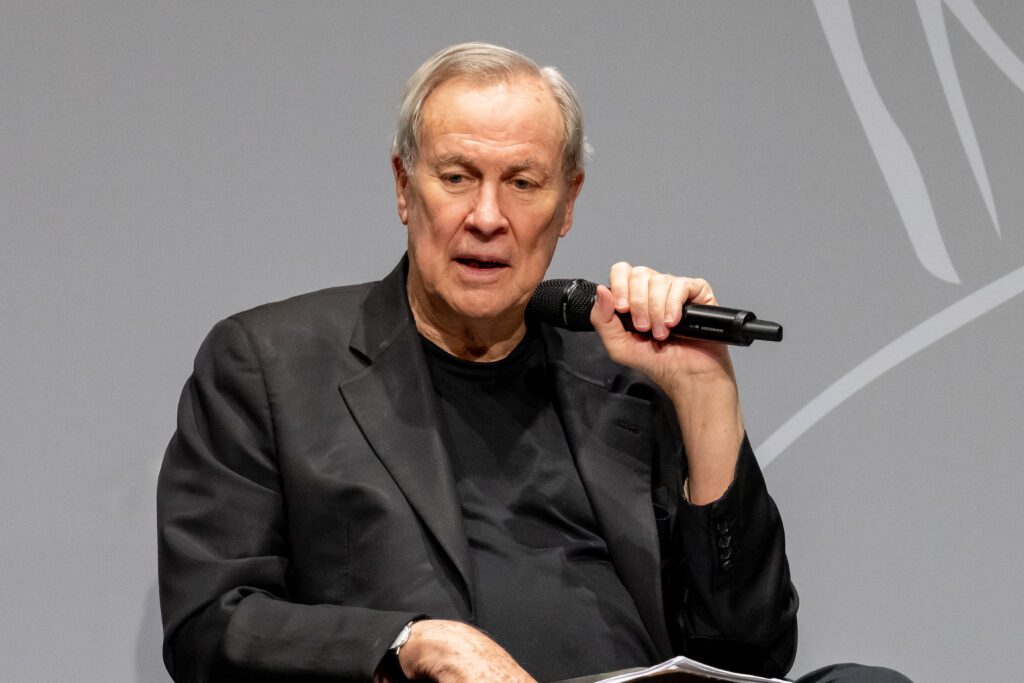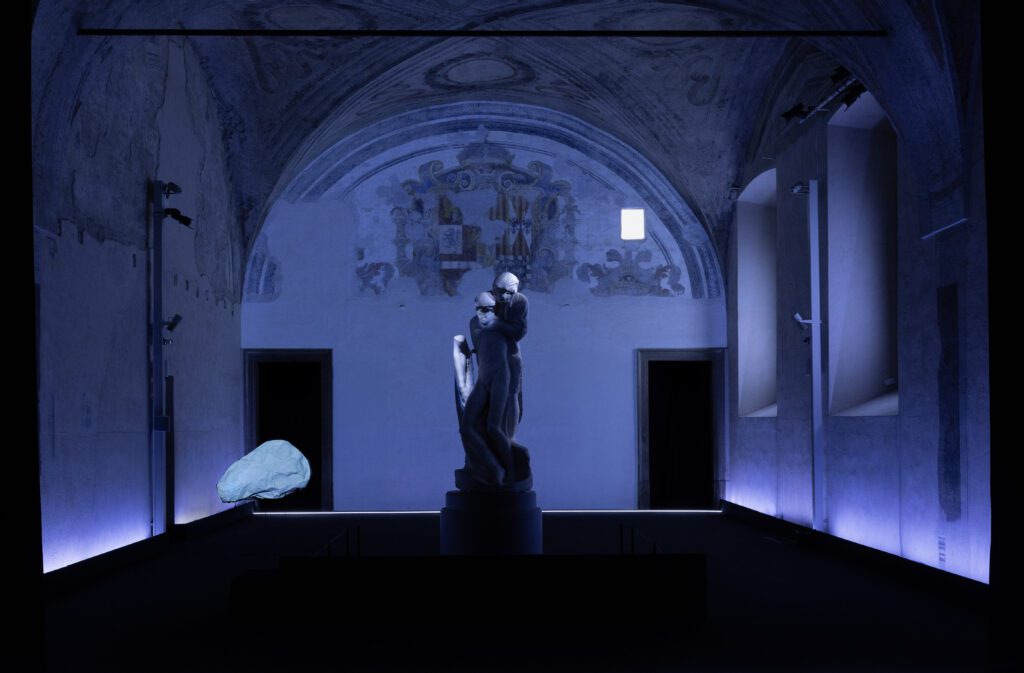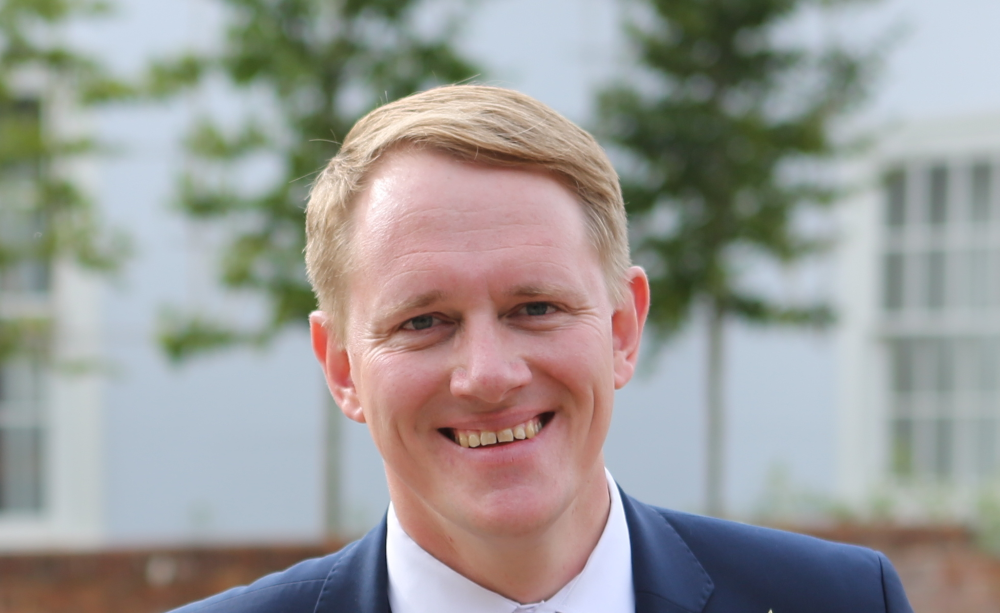Robert Wilson Illuminates the Meaning of Light, Darkness, and Timeless as He Reimagines Michelangelo’s Pietà
At Salone del Mobile.Milano 2025, celebrated director and visual artist Robert Wilson shared his meditative reflections on light, darkness, and design during an in-depth interview with Maria Porro, President of Salone del Mobile.Milano. Known globally for his groundbreaking work in theater and visual art, Wilson offered an introspective look into the interplay of space, time, and emotion through light.

Light and Darkness: Two Sides of the Same Story
Wilson began by exploring the tension between illumination and shadow. “Without light, there’s no space,” he explained. “The light is what makes the darkness darker.” Drawing from his background in architecture and theater, he emphasized how balance between the two elements is essential in all forms of design. Holding up a white tissue against his black jacket, Wilson demonstrated how contrast defines perception: “The jacket is now blacker because of the white tissue.”
Rather than treating light as an afterthought in theatrical productions, Wilson flips the traditional creative process. “What if you light it first?” he asked. “Start with light, before the text is written, before the music is written.” For Wilson, light doesn’t just reveal a scene—it is the scene. This philosophy challenges the hierarchy of disciplines in traditional production, urging a more holistic approach that treats lighting as equal to text and music.

A Firsthand Encounter with Darkness and Discovery
I had the opportunity to experience Wilson’s lighting installation in person—and it left a powerful impression. After we entered the space, light levels dropped and we were enveloped in what felt like an abyss of total darkness. I would have guessed the blackout lasted nearly five minutes. In reality, it was only two and a half. The silence was so complete, we had no idea the curtain had opened until light began to emerge.
At first, the image before us appeared to move. I couldn’t tell whether that was intentional or simply the result of jet lag playing tricks on my vision. But that ambiguity—real or imagined—felt entirely consistent with Wilson’s approach: immersive, interpretive, disorienting, and deeply reflective.
Midway through the show, the light slowly ramped up to full brightness. That’s when I noticed something peculiar—the fresco on the wall appeared much whiter than the ceiling. I initially assumed it was simply a difference I hadn’t perceived before due to the dim lighting. But after the show, we were allowed to walk across the stage. Only then did I realize that the wall and ceiling were the exact same color. It was the light itself that had altered my perception—a striking affirmation of Wilson’s belief that “light is not only about what you see—it’s how you feel when you see it.”

Reimagining Michelangelo’s Pietà
Wilson’s recent work with Michelangelo’s unfinished Pietà provided the perfect canvas for his philosophy. The installation unfolded over 23 minutes. “My first idea,” Wilson said, “was to build a long tunnel of total darkness and silence that people would walk through for 10 or 15 minutes before seeing the Pietà.” Although this proposal wasn’t approved, it underscored his intent: to strip away distraction and prepare the viewer for a truly reflective encounter.
“If the light comes on quickly, we react. But if it takes time, we discover,” he said. That element of discovery lies at the heart of his approach. The Pietà wasn’t merely revealed—it was unveiled, as if reintroducing itself to each viewer for the very first time.
Discovering the Contemporary in the Classical
When asked by Porro what “contemporary” means to him, Wilson looked to the past. “Contemporary is discovering the classics,” he said. Ancient civilizations—from the Romans to the Mayans—still inform our design language today. “Each generation has to rediscover them.”
Innovation, for Wilson, isn’t necessarily invention. “The form is there,” he explained. “What matters is how we see it now.” It’s this commitment to reinterpretation that defines his career, where the past and future are in constant conversation.
He also spoke about the importance of platforming both established and emerging voices in design. “This is what will make this design fair important and rich,” he said. “We need to see what young kids are thinking about design and life.” His work at The Watermill Center—a laboratory for young artists—underscores this commitment to mentorship.
Lessons from a Lifetime of Learning
Wilson credited his early education with shaping his creative lens, particularly his studies under Sibyl Moholy-Nagy. During a pivotal class, she challenged the students: “You have three minutes to design a city. Go!” Wilson responded by sketching an apple with a crystal cube at its core. “Our cities need something like a crystal cube in the core,” he said. “Like the cathedral in a medieval village—open to all, a place for reflection, creation, and community.”
The Bauhaus legacy also looms large in his work, where disciplinary boundaries blur. “At the Bauhaus, they didn’t separate art, architecture, dance, and design. It was all one,” he said.
Building Emotional Architecture
Wilson drew inspiration from Italian architect Giovanni Michelucci, who designed for time as much as form. “How beautiful it was at night, at dawn, under a quarter moon or full moon,” Wilson recalled. “He designed for time.”
That sensitivity to temporal experience is a hallmark of Wilson’s work. “If you know what you’re doing, don’t do it,” he said. “The reason to work is to say, ‘What is it?’ So we continue thinking about it.”
Wilson emphasized that light should resonate emotionally, not just visually. My own experience at the installation—where light made me question even the color of a wall—proved that point in the most visceral way possible.
Lighting the Future
As Robert Wilson continues to challenge how we perceive space, time, and narrative, one truth remains: through the deliberate, poetic use of light, he helps us see not just what is, but what might be. And sometimes, what we thought we saw was never really there at all.
Read the press release here






